Types of Cables and When to Use Them
Music business? All we know is the business of cables.
Knowing what cables to use, what purpose different cables serve, and why we have different cables is some very handy knowledge – and you’ll soon learn why. Your smartphone is wireless, but we definitely haven’t reached the point of wireless music studios!
Balanced Cables vs Unbalanced
Cables fit neatly into two categories: balanced and unbalanced.
Balanced cables cancel out noise and interference. With the addition of an extra conductor wire as well as a ground wire, the two-conductor wires cancel out noise and interference.
They do this because both conductor cables carry two identical copies of the signal. However, the identical signals have their polarity reversed.
Adding -15 and +15 together equals 0. So, usually, summing two identical signals with opposing polarities would equal silence.
And this is why balanced cables are awesome: rather than equalling silence, reflipping the polarity of both signals and combining the two cancels out any noise that the two conductor wires would have picked up and the receiving gear only reproduces the original signal!
This is because both of the signal copies pick up identical noise. So, by flipping the polarity again at the other end of the cable, the receiving gear only produces the original signal!
Unbalanced cables are much more likely to pick up said interference and noise because they only have one conductor wire and no polarity flipping!
If you do have to use an unbalanced cable, it’s very important to use one that is as short as possible.
A longer unbalanced cable will increase the chances of picking up unwanted noise!
Analog Cables
XLR (Balanced)
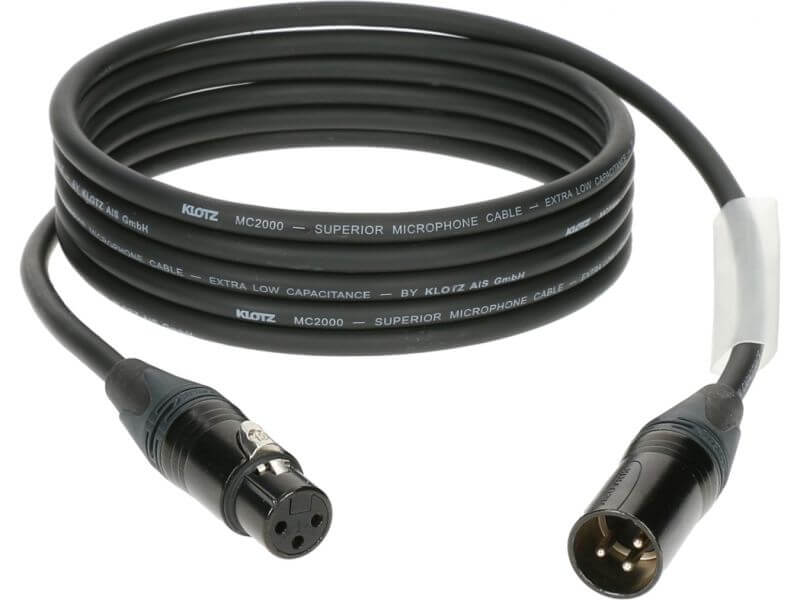
XLR (External Line Return) cables are always balanced. They snap/lock into place inside your connector(s) and they’re very hard, if not impossible, to accidentally pull out of place.
We most commonly use XLR cables for both live and studio speakers, as well as microphone connections. The rotation can vary, but gear inputs usually have a female head and the cables have a male head.
XLR cables can feature 3, 4, 5, 6, or 7 pins and internal wires. However, traditional (and the most common) XLR cables feature 3 pins. Two pins are conductors (one negative and one positive) as well as a grounded pin.
TRS (Balanced or Unbalanced)
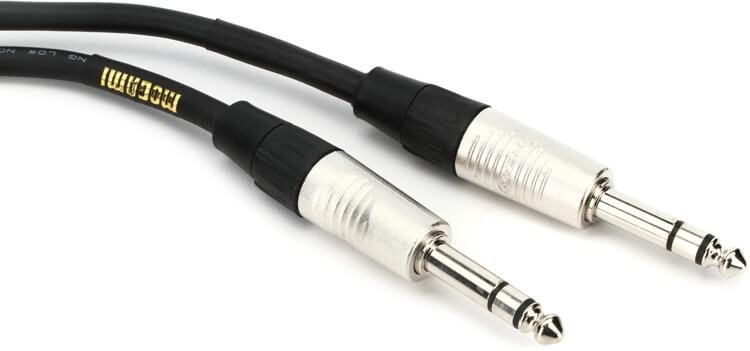
TRS (Tip Ring Sleeve) cables also have three wires inside them, and again the two conductors cancel out the noise. The tip & ring components are the two conductors, while the sleeve is the ground.
TRS cables are the most common cable used by us musicians. We can use them for speaker inputs and any line input on devices such as your audio interface.
Before we cover TS cables, we should cover how you tell them apart from one another!
TRS cables have two stripes on them, while TS ables only have one!
TS (Unbalanced)
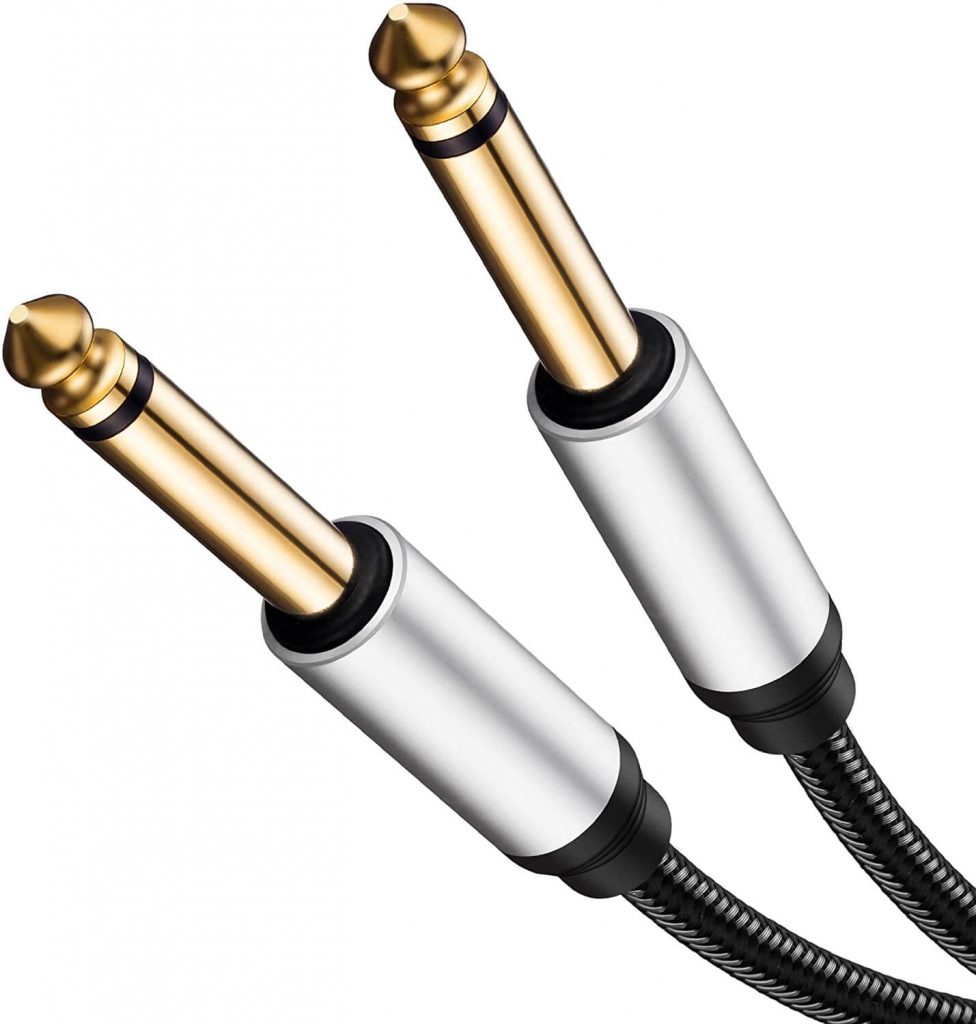
TS (Tip Sleeve) cables are most commonly used for instrument connections like guitar and bass.
TS are always unbalanced, whether the connected device has a balanced input/output or not.
RCA (Unbalanced)
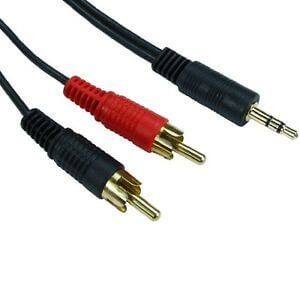
RCA cables have one cable per channel (one left and one right). RCA cables are more commonly found on consumer products than professional studio equipment, but that doesn’t mean you’ll never use them.
If you’re a DJ, chances are you’ve had to work with these. They’re commonly used on turntables to connect to live rigs!
Digital Cables
MIDI (Unbalanced)
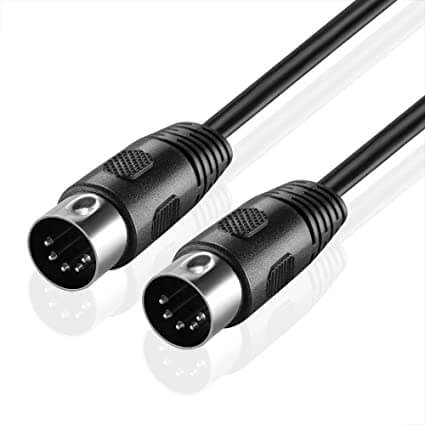
MIDI cables transfer digital information known as event messages. Information sent through MIDI cables represents your commands on your hardware such as which note you have pressed, how hard and fast you’ve pressed it, etc.
Be sure to read through our MIDI & MIDI 2.0 articles to satisfy that thirst for knowledge!
USB (Unbalanced)
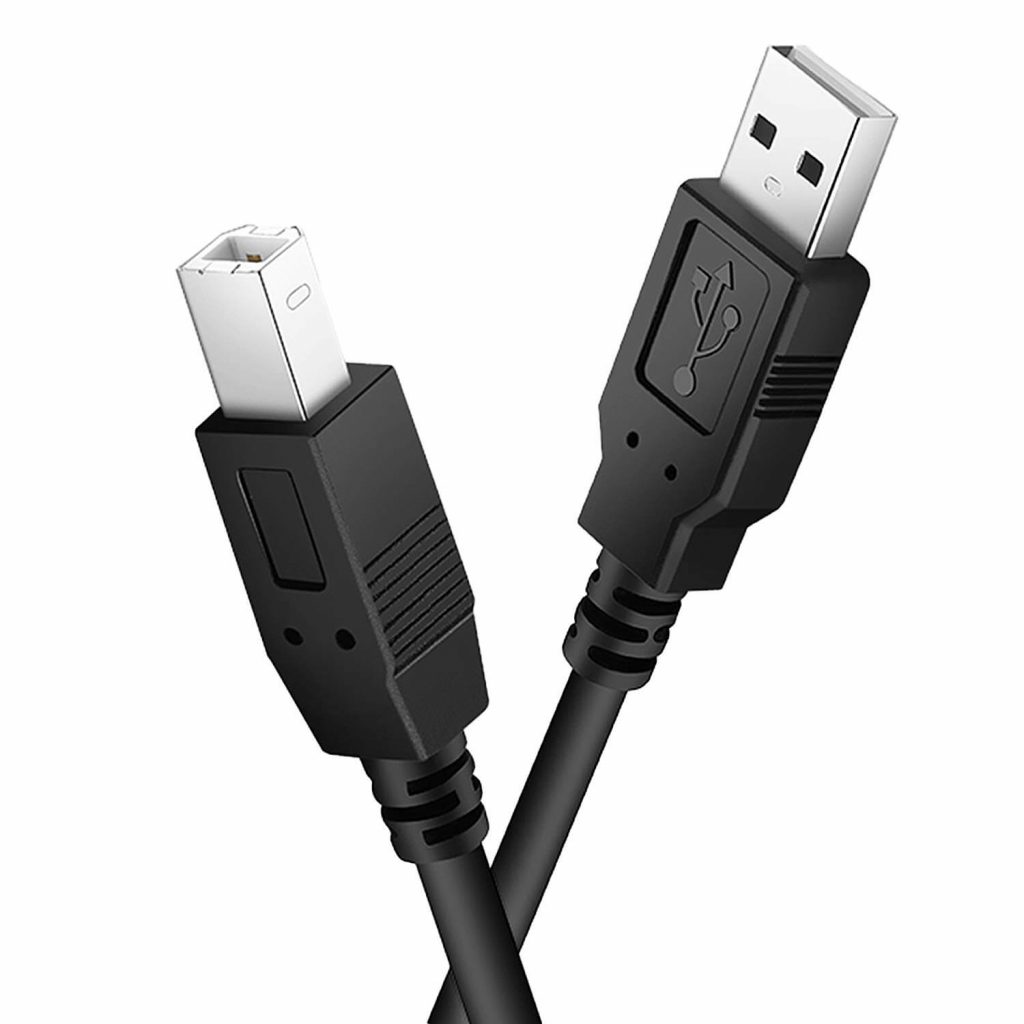
USB cables are much more common than MIDI cables. Should you buy a MIDI keyboard, it’ll come with a MIDI-USB connector because USB inputs are universally used.
As with MIDI cables, the same MIDI data transfers happen – only a USB connector allows your budget laptop to receive the info!
Should I Use Balanced or Unbalanced Cables?
Before you make this decision, you should know that just because a cable is balanced does not mean it will create a balanced connection.
The input and output that the cable is connecting must also be balanced for the connection to be balanced. Even one unbalanced point in the connection will create an unbalanced connection!
How Do I Know if My Equipment is Balanced?
Some mixers, synths, microphones and other hardware units have it written on them that their output/input is balanced.
However, if your input and/or output is an XLR connection then it is a balanced connection!
A quick way to spot unbalanced gear:
If it has an RCA output/input it is unbalanced.
Guitars and bass connections are always unbalanced.
If it’s a 1/4 inch input/output (either mono or stereo) then it is probably unbalanced. However, this isn’t always the case. Google the equipment or read the manual if you’re not sure!
So, with all of this in mind, use what’s in front of you to determine whether or not you need a balanced or unbalanced cable!
But hold up! If you’re looking into cables because you wanted to know how you can get your neat guitar riffs fleshed out in a DAW… why not look into guitar samples instead?
Mixxed has thousands of samples for you to look through, from guitar loops to vocals!
